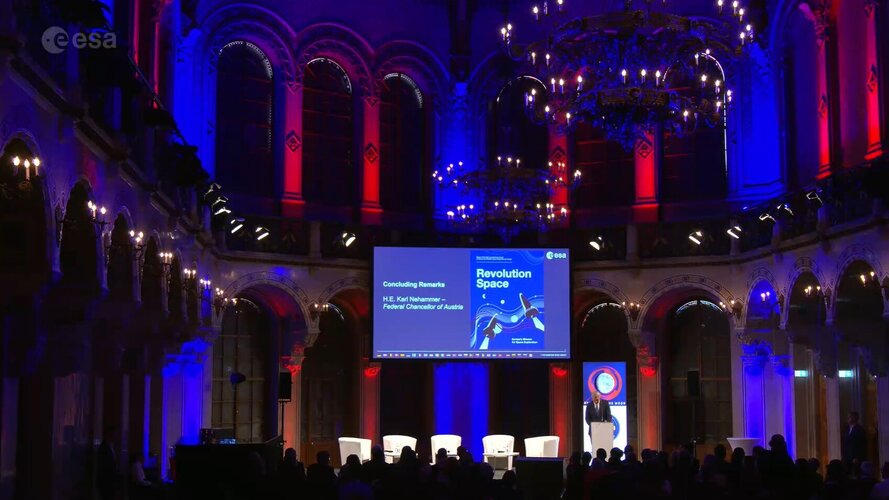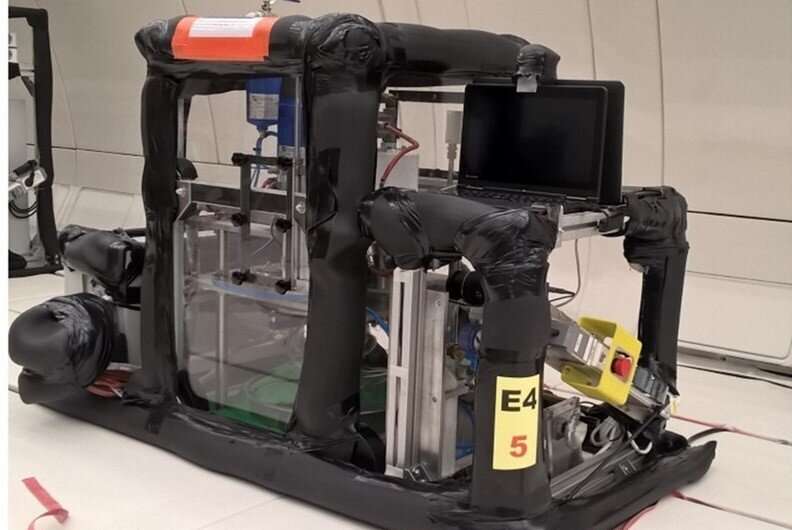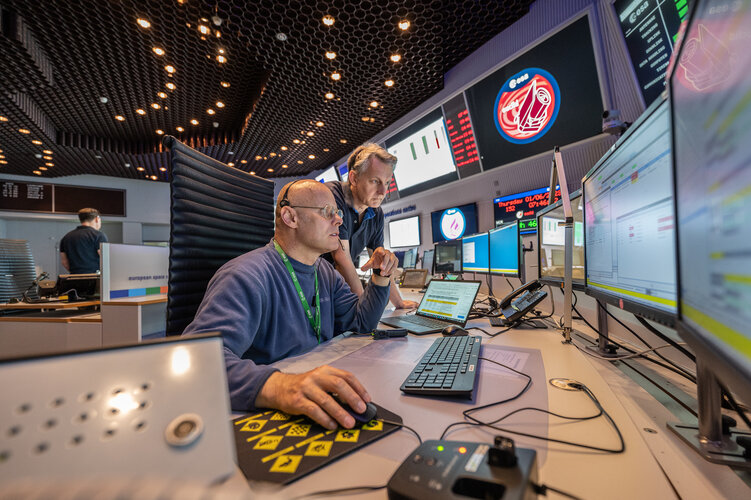
Copernical Team
Tuesday, 06 June 2023 04:53
RAND study calls for global space traffic management body
Seattle WA (SPX) Jun 06, 2023
 New research from the RAND Corporation underscores the urgent necessity for the establishment of an International Space Traffic Management Organization (ISTMO). This conclusion comes as a response to the ballooning population of active satellites and other debris orbiting Earth, which is edging the world closer to a critical tipping point in space traffic management (STM). With almost 7,000 acti
New research from the RAND Corporation underscores the urgent necessity for the establishment of an International Space Traffic Management Organization (ISTMO). This conclusion comes as a response to the ballooning population of active satellites and other debris orbiting Earth, which is edging the world closer to a critical tipping point in space traffic management (STM). With almost 7,000 acti
 New research from the RAND Corporation underscores the urgent necessity for the establishment of an International Space Traffic Management Organization (ISTMO). This conclusion comes as a response to the ballooning population of active satellites and other debris orbiting Earth, which is edging the world closer to a critical tipping point in space traffic management (STM). With almost 7,000 acti
New research from the RAND Corporation underscores the urgent necessity for the establishment of an International Space Traffic Management Organization (ISTMO). This conclusion comes as a response to the ballooning population of active satellites and other debris orbiting Earth, which is edging the world closer to a critical tipping point in space traffic management (STM). With almost 7,000 acti
Published in
News
Tagged under
Tuesday, 06 June 2023 04:53
Webb Telescope detects universe's most distant complex organic molecules
Champaign IL (SPX) Jun 06, 2023
 Researchers have detected complex organic molecules in a galaxy more than 12 billion light-years away from Earth - the most distant galaxy in which these molecules are now known to exist. Thanks to the capabilities of the recently launched James Webb Space Telescope and careful analyses from the research team, a new study lends critical insight into the complex chemical interactions that occur i
Researchers have detected complex organic molecules in a galaxy more than 12 billion light-years away from Earth - the most distant galaxy in which these molecules are now known to exist. Thanks to the capabilities of the recently launched James Webb Space Telescope and careful analyses from the research team, a new study lends critical insight into the complex chemical interactions that occur i
 Researchers have detected complex organic molecules in a galaxy more than 12 billion light-years away from Earth - the most distant galaxy in which these molecules are now known to exist. Thanks to the capabilities of the recently launched James Webb Space Telescope and careful analyses from the research team, a new study lends critical insight into the complex chemical interactions that occur i
Researchers have detected complex organic molecules in a galaxy more than 12 billion light-years away from Earth - the most distant galaxy in which these molecules are now known to exist. Thanks to the capabilities of the recently launched James Webb Space Telescope and careful analyses from the research team, a new study lends critical insight into the complex chemical interactions that occur i
Published in
News
Tagged under
Tuesday, 06 June 2023 04:53
Webb Telescope reveals early universe crackled with bursts of star formation
Baltimore MD (SPX) Jun 06, 2023
 Among the most fundamental questions in astronomy is: How did the first stars and galaxies form? NASA's James Webb Space Telescope is already providing new insights into this question. One of the largest programs in Webb's first year of science is the JWST Advanced Deep Extragalactic Survey, or JADES, which will devote about 32 days of telescope time to uncover and characterize faint, distant ga
Among the most fundamental questions in astronomy is: How did the first stars and galaxies form? NASA's James Webb Space Telescope is already providing new insights into this question. One of the largest programs in Webb's first year of science is the JWST Advanced Deep Extragalactic Survey, or JADES, which will devote about 32 days of telescope time to uncover and characterize faint, distant ga
 Among the most fundamental questions in astronomy is: How did the first stars and galaxies form? NASA's James Webb Space Telescope is already providing new insights into this question. One of the largest programs in Webb's first year of science is the JWST Advanced Deep Extragalactic Survey, or JADES, which will devote about 32 days of telescope time to uncover and characterize faint, distant ga
Among the most fundamental questions in astronomy is: How did the first stars and galaxies form? NASA's James Webb Space Telescope is already providing new insights into this question. One of the largest programs in Webb's first year of science is the JWST Advanced Deep Extragalactic Survey, or JADES, which will devote about 32 days of telescope time to uncover and characterize faint, distant ga
Published in
News
Tagged under
Tuesday, 06 June 2023 04:53
China's main rocket engine for lunar crewed missions sets record
Beijing (XNA) Jun 06, 2023
 In recent developments from the China Aerospace Science and Technology Corporation, the primary rocket engine designed for future manned lunar missions has undergone its sixth trial run. This round of testing brings the cumulative operation time of the 130-tonne class liquid oxygen kerosene rocket engine to an impressive 3,300 seconds, establishing a new record for China.
This achievement
In recent developments from the China Aerospace Science and Technology Corporation, the primary rocket engine designed for future manned lunar missions has undergone its sixth trial run. This round of testing brings the cumulative operation time of the 130-tonne class liquid oxygen kerosene rocket engine to an impressive 3,300 seconds, establishing a new record for China.
This achievement
 In recent developments from the China Aerospace Science and Technology Corporation, the primary rocket engine designed for future manned lunar missions has undergone its sixth trial run. This round of testing brings the cumulative operation time of the 130-tonne class liquid oxygen kerosene rocket engine to an impressive 3,300 seconds, establishing a new record for China.
This achievement
In recent developments from the China Aerospace Science and Technology Corporation, the primary rocket engine designed for future manned lunar missions has undergone its sixth trial run. This round of testing brings the cumulative operation time of the 130-tonne class liquid oxygen kerosene rocket engine to an impressive 3,300 seconds, establishing a new record for China.
This achievement
Published in
News
Tagged under
Tuesday, 06 June 2023 04:53
Slippery Science: Sols 3851-3852
Pasadena CA (JPL) Jun 06, 2023
 There's a special sort of hopeful-nervousness I feel on a weekend with a challenging drive. It's how I felt this last weekend, waiting for our rover to try and execute the 11 meter drive that was supposed to get us off a large rock precluding any arm activities over the weekend. Well, we did get off the rock (yay!) but our wheels still slipped in the surrounding sand and ended the drive early in
There's a special sort of hopeful-nervousness I feel on a weekend with a challenging drive. It's how I felt this last weekend, waiting for our rover to try and execute the 11 meter drive that was supposed to get us off a large rock precluding any arm activities over the weekend. Well, we did get off the rock (yay!) but our wheels still slipped in the surrounding sand and ended the drive early in
 There's a special sort of hopeful-nervousness I feel on a weekend with a challenging drive. It's how I felt this last weekend, waiting for our rover to try and execute the 11 meter drive that was supposed to get us off a large rock precluding any arm activities over the weekend. Well, we did get off the rock (yay!) but our wheels still slipped in the surrounding sand and ended the drive early in
There's a special sort of hopeful-nervousness I feel on a weekend with a challenging drive. It's how I felt this last weekend, waiting for our rover to try and execute the 11 meter drive that was supposed to get us off a large rock precluding any arm activities over the weekend. Well, we did get off the rock (yay!) but our wheels still slipped in the surrounding sand and ended the drive early in
Published in
News
Tagged under
Tuesday, 06 June 2023 04:53
Terran Orbital developed CAPSTONE lunar probe completes primary mission
Boca Raton FL (SPX) Jun 06, 2023
 Terran Orbital Corporation, a premier player in the satellite-based solutions market, reported the successful accomplishment of the CAPSTONE's primary mission - navigating to and within the Near Rectilinear Halo Orbit (NRHO) and performing the initial successful test of the Cislunar Autonomous Positioning System (CAPS) alongside the NASA Lunar Reconnaissance Orbiter (LRO). As a bonus, CAPSTONE a
Terran Orbital Corporation, a premier player in the satellite-based solutions market, reported the successful accomplishment of the CAPSTONE's primary mission - navigating to and within the Near Rectilinear Halo Orbit (NRHO) and performing the initial successful test of the Cislunar Autonomous Positioning System (CAPS) alongside the NASA Lunar Reconnaissance Orbiter (LRO). As a bonus, CAPSTONE a
 Terran Orbital Corporation, a premier player in the satellite-based solutions market, reported the successful accomplishment of the CAPSTONE's primary mission - navigating to and within the Near Rectilinear Halo Orbit (NRHO) and performing the initial successful test of the Cislunar Autonomous Positioning System (CAPS) alongside the NASA Lunar Reconnaissance Orbiter (LRO). As a bonus, CAPSTONE a
Terran Orbital Corporation, a premier player in the satellite-based solutions market, reported the successful accomplishment of the CAPSTONE's primary mission - navigating to and within the Near Rectilinear Halo Orbit (NRHO) and performing the initial successful test of the Cislunar Autonomous Positioning System (CAPS) alongside the NASA Lunar Reconnaissance Orbiter (LRO). As a bonus, CAPSTONE a
Published in
News
Tagged under
Monday, 05 June 2023 15:18
Successful Launch and Deployment of Dragon into Orbit by SpaceX
Kennedy Space Center FL (UPI) Jun 06, 2023
 After some delays over the weekend, SpaceX has successfully launched its Crew Resupply Mission 28 from the Kennedy Space Center in Florida. The initial launch was postponed due to unfavorable weather conditions, particularly high winds in the booster recovery zone.
The mission was successfully executed at 11:47 a.m. EDT Monday, with weather conditions deemed 60% favorable for liftoff. Spac
After some delays over the weekend, SpaceX has successfully launched its Crew Resupply Mission 28 from the Kennedy Space Center in Florida. The initial launch was postponed due to unfavorable weather conditions, particularly high winds in the booster recovery zone.
The mission was successfully executed at 11:47 a.m. EDT Monday, with weather conditions deemed 60% favorable for liftoff. Spac
 After some delays over the weekend, SpaceX has successfully launched its Crew Resupply Mission 28 from the Kennedy Space Center in Florida. The initial launch was postponed due to unfavorable weather conditions, particularly high winds in the booster recovery zone.
The mission was successfully executed at 11:47 a.m. EDT Monday, with weather conditions deemed 60% favorable for liftoff. Spac
After some delays over the weekend, SpaceX has successfully launched its Crew Resupply Mission 28 from the Kennedy Space Center in Florida. The initial launch was postponed due to unfavorable weather conditions, particularly high winds in the booster recovery zone.
The mission was successfully executed at 11:47 a.m. EDT Monday, with weather conditions deemed 60% favorable for liftoff. Spac
Published in
News
Tagged under
Friday, 02 June 2023 09:00
European conference: Ready for the Moon
 Video:
02:42:59
Video:
02:42:59
Watch the replay of the high-level conference organised in cooperation with the Federal Chancellery of the Republic of Austria to discuss the geo-political, economic and societal potential of Europe’s future role in space exploration endeavours.
The aim of the conference is to open the debate in Europe following the release of the High Level Advisory Group (HLAG) on the future of human and robotic space exploration for Europe.
ESA Director General Josef Aschbacher and the Chancellor of Austria Karl Nehammer take part, as well as Ministers, heads of space agencies and other prominent guests.
The plenary conference is followed by
Published in
News
Tagged under



